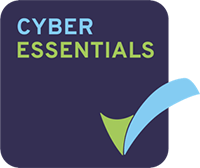Heart Rate Variability an Introduction:
Your heart is the most important muscle in your body. It pumps blood and oxygen to your organs and tissues, keeping you alive and healthy. Monitoring your heart rate variability (HRV) can give you a wealth of information about your cardiovascular system and overall health. In this article, we will take an in-depth look at the benefits of tracking HRV and how to monitor it. We will also explore the connection between HRV and overall health, as well as tips for improving your HRV.
What is Heart Rate Variability?
Heart Rate Variability (HRV) is the variation of time intervals between successive heartbeats. It is the measure of the differences between each heartbeat, which is controlled by the Autonomic Nervous System (ANS). HRV can be measured through electrocardiogram (ECG), photoplethysmogram (PPG), and pulse rate variability (PRV).
Factors that Affect HRV
HRV is affected by many factors such as age, gender, genetics, lifestyle, and health status. In general, younger individuals tend to have higher HRV than older individuals. Women typically have higher HRV than men. Healthy lifestyle choices such as exercise, diet, and stress management can positively impact HRV. On the other hand, poor lifestyle choices such as lack of sleep, poor diet, and high stress levels can negatively impact HRV.
Importance of HRV
HRV is an important indicator of overall health and well-being. The ANS controls many vital functions in the body such as heart rate, digestion, breathing, and stress response. By measuring HRV, individuals can assess the function of their ANS and identify any imbalances that may be negatively impacting their health.
Benefits of Tracking Heart Rate Variability
Assessing Autonomic Nervous System Function:HRV is a non-invasive way to measure ANS function. By tracking HRV, individuals can identify any imbalances in their ANS that may be contributing to health problems. For example, individuals with low HRV may be at a higher risk for developing heart disease or other chronic health conditions.
Tracking Stress and Recovery:
HRV is a useful tool for tracking stress levels and recovery. Stressful situations can negatively impact HRV, while rest and relaxation can improve HRV. By monitoring HRV, individuals can identify when their body is under stress and take steps to reduce stress levels.
Monitoring Athletic Performance
HRV is also used by athletes to monitor their performance and recovery. By tracking HRV, athletes can identify when their body is under stress and adjust their training accordingly. They can also monitor their recovery and ensure they are not overtraining, which can lead to injury.
Identifying Health Risks
HRV can also be used to identify potential health risks. For example, low HRV has been linked to an increased risk of heart disease, diabetes, and other chronic health conditions. By monitoring HRV, individuals can identify any potential health risks and take steps to reduce their risk.
How to Monitor Heart Rate Variability
Methods for Measuring HRV
HRV can be measured through various methods such as electrocardiogram (ECG), photoplethysmogram (PPG), and pulse rate variability (PRV). ECG is considered the most accurate method for measuring HRV, but it requires specialized equipment. PPG and PRV are less accurate but can be measured using a smartphone app or wearable device. This is how we measure HRV at Vastmindz, we use rPPG technology combined with advanced AI and Algorithms to measure HRV remotely with no touch.
Best Time to Measure HRV
The best time to measure HRV is first thing in the morning, before any food or drink is consumed. It is also recommended to measure HRV at the same time each day to ensure consistency.
Choosing an HRV App or Device
There are many HRV apps and devices available on the market. When choosing an app or device, it is important to consider factors such as accuracy, ease of use, and data visualization. Vastmindz provides a simple SDK that can be integrated into a platform that allows the extraction of HRV data remotely just by using your mobile phone camera or by using the Visix App in Microsoft teams.
Interpreting HRV Data
Interpreting HRV data can be complex, and it is important to work with a healthcare professional to interpret the data. However, some general guidelines can be followed. Higher HRV is generally considered to be indicative of better overall health and a well-functioning ANS. Lower HRV may indicate poor health or an imbalance in the ANS. The goal is to achieve a balance between sympathetic and parasympathetic activity in the ANS, which can be reflected in HRV data.
FAQs about Heart Rate Variability
Q: What factors can negatively impact HRV?
A: Poor lifestyle choices such as lack of sleep, poor diet, and high stress levels can negatively impact HRV.
Q: Can HRV be improved?
A: Yes, lifestyle choices such as exercise, diet, and stress management can positively impact HRV.
Q: Is HRV measurement accurate?
A: The accuracy of HRV measurement can vary depending on the method used. ECG is considered the most accurate method, while PPG and PRV are less accurate.
Q: What is a normal range for HRV?
A: There is no single normal range for HRV, as it can vary depending on factors such as age, gender, and health status. However, higher HRV is generally considered to be indicative of better overall health and a well-functioning ANS.
Q: Can HRV be used to diagnose medical conditions?
A: HRV alone cannot be used to diagnose medical conditions. However, it can be a useful tool for identifying potential health risks and assessing ANS function.
Conclusion
Tracking Heart Rate Variability is an important tool for assessing overall health and well-being. By monitoring HRV, individuals can identify any imbalances in their ANS and take steps to improve their health. HRV is also useful for tracking stress levels, monitoring athletic performance, and identifying potential health risks. There are many methods for measuring HRV, including ECG, PPG, and PRV, and many apps and devices available for tracking HRV including the technology from Vastmindz. While interpreting HRV data can be complex, working with a healthcare professional can help individuals better understand their HRV and take steps to improve their overall health and well-being.
Some interesting references worth reviewing
https://pubmed.ncbi.nlm.nih.gov/35538242/

Author:
Nikhil Sehgal
Improving health & wellbeing with AI | Founder/CEO @ Vastmindz | Forbes 30 Under 30

